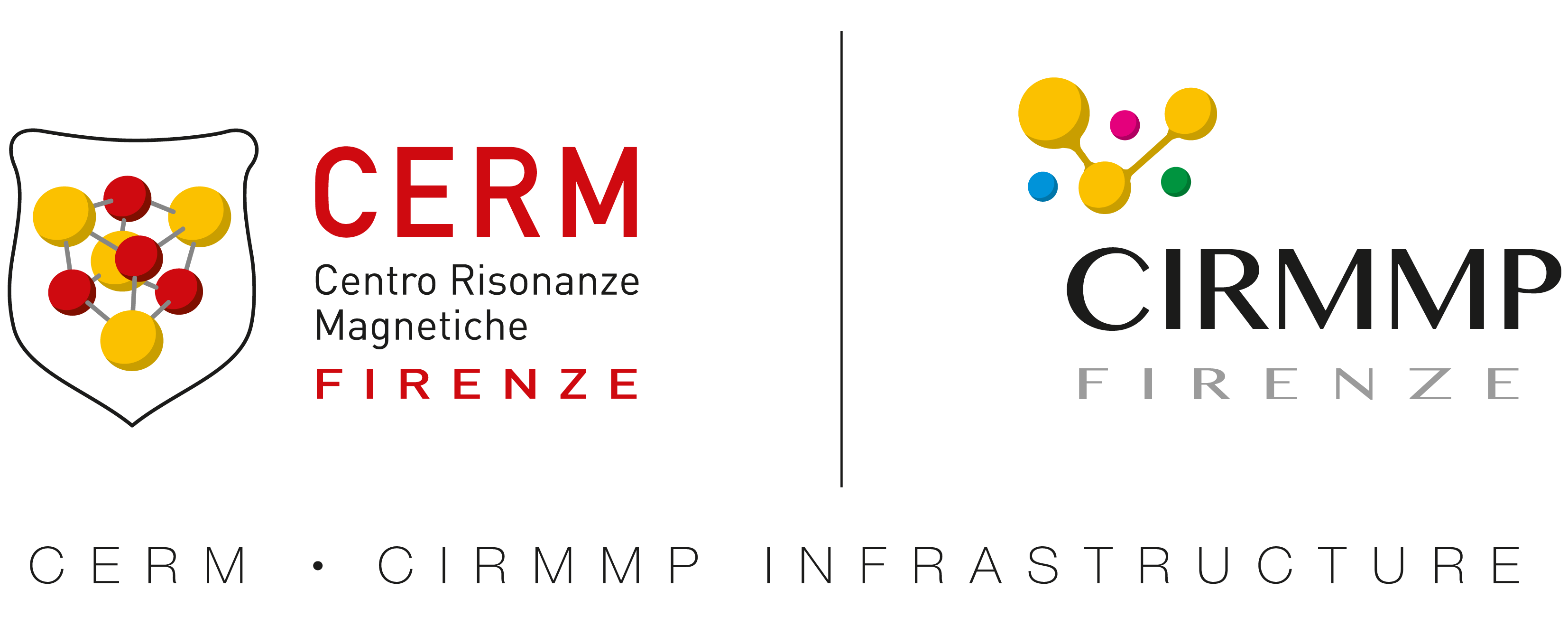Intrinsically Disordered Proteins (IDPs) represent an emerging field of research in modern protein chemistry and are now under the spotlights of structural biology. They lack a stable three-dimensional structure, but rather adopt many different conformations in dynamic equilibrium and the interplay between local dynamics and global rearrangements is key for their function. Present in any living organism they play key roles in a variety of different cellular pathways. Their misfunction is related to the onset of severe diseases.
NMR represents a unique tool for their investigation1. However experimental approaches should be optimized for the properties of IDPs. Novel methods are under continuous development: a full array of experiments are now available to perform complete sequence specific assignment2–6, to determine key observables to achieve structural and dynamic information7 and to acquire simultaneous snapshots of IDPs through multiple receiver variants of the experiments.8 These experiments enable the characterization of IDPs in conditions near physiological ones (pH, temperature, ionic strength, etc.)9,10 and allow us to identify functional modules enabled by disorder.
Several biomedically relevant proteins, in which intrinsic disorder plays an important role for their function, were studied at CERM. These include several viral proteins11–13, the flexible linkers of complex proteins14–18, such as CREB-binding protein (CBP) and the androgen receptor (AR), which have key roles in protein function and in the onset of misfunction, and α-synuclein in different physiologically relevant conditions8. Other studies reveal the sequence determinants of peculiar structural features, such as in the case of osteopontin7,19, for which aromatic-proline motives are relevant for the stabilization or its compact state 19.
Watch on YouTube: IDPbyNMR the Movie
(1) Felli, I. C.; Pierattelli, R. Intrinsically Disordered Proteins Studied by NMR Spectroscopy; 2015. https://doi.org/10.1007/978-3-319-20164-1.
(2) Bermel, W.; Bertini, I.; Felli, I. C.; Lee, Y.-M.; Luchinat, C.; Pierattelli, R. Protonless NMR Experiments for Sequence-Specific Assignment of Backbone Nuclei in Unfolded Proteins. J. Am. Chem. Soc. 2006, 128 (12), 3918–3919. https://doi.org/10.1021/ja0582206.
(3) Bermel, W.; Felli, I. C.; Gonnelli, L.; Kozmiński, W.; Piai, A.; Pierattelli, R.; Zawadzka-Kazimierczuk, A. High-Dimensionality 13C Direct-Detected NMR Experiments for the Automatic Assignment of Intrinsically Disordered Proteins. J. Biomol. NMR 2013, 57 (4), 353–361. https://doi.org/10.1007/s10858-013-9793-z.
(4) Bermel, W.; Bertini, I.; Felli, I. C.; Gonnelli, L.; Koźmiński, W.; Piai, A.; Pierattelli, R.; Stanek, J. Speeding up Sequence Specific Assignment of IDPs. J. Biomol. NMR 2012, 53 (4), 293–301. https://doi.org/10.1007/s10858-012-9639-0.
(5) Bermel, W.; Bertini, I.; Csizmok, V.; Felli, I. C.; Pierattelli, R.; Tompa, P. H-Start for Exclusively Heteronuclear NMR Spectroscopy: The Case of Intrinsically Disordered Proteins. J. Magn. Reson. 2009, 198 (2), 275–281. https://doi.org/10.1016/j.jmr.2009.02.012.
(6) Murrali, M. G.; Schiavina, M.; Sainati, V.; Bermel, W.; Pierattelli, R.; Felli, I. C. 13C APSY-NMR for Sequential Assignment of Intrinsically Disordered Proteins. J. Biomol. NMR 2018. https://doi.org/10.1007/s10858-018-0167-4.
(7) Mateos, B.; Konrat, R.; Pierattelli, R.; Felli, I. C. NMR Characterization of Long-Range Contacts in Intrinsically Disordered Proteins from Paramagnetic Relaxation Enhancement in 13 C Direct-Detection Experiments. ChemBioChem 2019, 20 (3), 335–339. https://doi.org/10.1002/cbic.201800539.
(8) Schiavina, M.; Murrali, M. G.; Pontoriero, L.; Sainati, V.; Kümmerle, R.; Bermel, W.; Pierattelli, R.; Felli, I. C. Taking Simultaneous Snapshots of Intrinsically Disordered Proteins in Action. Biophys. J. 2019, 46–55. https://doi.org/10.1016/j.bpj.2019.05.017.
(9) Gil, S.; Hošek, T.; Solyom, Z.; Kümmerle, R.; Brutscher, B.; Pierattelli, R.; Felli, I. C. NMR Spectroscopic Studies of Intrinsically Disordered Proteins at Near-Physiological Conditions. Angew. Chemie - Int. Ed. 2013, 52 (45), 11808–11812. https://doi.org/10.1002/anie.201304272.
(10) Felli, I. C.; Gonnelli, L.; Pierattelli, R. In-Cell13C NMR Spectroscopy for the Study of Intrinsically Disordered Proteins. Nat. Protoc. 2014, 9 (9), 2005–2016. https://doi.org/10.1038/nprot.2014.124.
(11) Hošek, T.; Calçada, E. O.; Nogueira, M. O.; Salvi, M.; Pagani, T. D.; Felli, I. C.; Pierattelli, R. Structural and Dynamic Characterization of the Molecular Hub Early Region 1A (E1A) from Human Adenovirus. Chem. - A Eur. J. 2016, 22 (37), 13010–13013. https://doi.org/10.1002/chem.201602510.
(12) Calçada, E. O.; Felli, I. C.; Hošek, T.; Pierattelli, R. The Heterogeneous Structural Behavior of E7 from HPV16 Revealed by NMR Spectroscopy. ChemBioChem 2013, 14 (14), 1876–1882. https://doi.org/10.1002/cbic.201300172.
(13) Nogueira, M. O.; Hošek, T.; Calçada, E. O.; Castiglia, F.; Massimi, P.; Banks, L.; Felli, I. C.; Pierattelli, R. Monitoring HPV-16 E7 Phosphorylation Events. Virology 2017, 503 (December 2016), 70–75. https://doi.org/10.1016/j.virol.2016.12.030.
(14) Contreras-Martos, S.; Piai, A.; Kosol, S.; Varadi, M.; Bekesi, A.; Lebrun, P.; Volkov, A. N.; Gevaert, K.; Pierattelli, R.; Felli, I. C.; et al. Linking Functions: An Additional Role for an Intrinsically Disordered Linker Domain in the Transcriptional Coactivator CBP. Sci. Rep. 2017, 7 (1), 4676. https://doi.org/10.1038/s41598-017-04611-x.
(15) Escobedo, A.; Topal, B.; Kunze, M. B. A.; Aranda, J.; Chiesa, G.; Mungianu, D.; Bernardo-Seisdedos, G.; Eftekharzadeh, B.; Gairí, M.; Pierattelli, R.; et al. Side Chain to Main Chain Hydrogen Bonds Stabilize a Polyglutamine Helix in a Transcription Factor. Nat. Commun. 2019, 10 (1), 2034. https://doi.org/10.1038/s41467-019-09923-2.
(16) Eftekharzadeh, B.; Piai, A.; Chiesa, G.; Mungianu, D.; García, J.; Pierattelli, R.; Felli, I. C.; Salvatella, X. Sequence Context Influences the Structure and Aggregation Behavior of a PolyQ Tract. Biophys. J. 2016, 110 (11), 2361–2366. https://doi.org/10.1016/j.bpj.2016.04.022.
(17) Piai, A.; Calçada, E. O.; Tarenzi, T.; Grande, A. Del; Varadi, M.; Tompa, P.; Felli, I. C.; Pierattelli, R. Just a Flexible Linker? The Structural and Dynamic Properties of CBP-ID4 Revealed by NMR Spectroscopy. Biophys. J. 2016, 110 (2), 372–381. https://doi.org/10.1016/j.bpj.2015.11.3516.
(18) Kosol, S.; Contreras-Martos, S.; Piai, A.; Varadi, M.; Lazar, T.; Bekesi, A.; Lebrun, P.; Felli, I. C.; Pierattelli, R.; Tompa, P. Interaction between the Scaffold Proteins CBP by IQGAP1 Provides an Interface between Gene Expression and Cytoskeletal Activity. Sci. Rep. 2020, 10 (1), 1–15. https://doi.org/10.1038/s41598-020-62069-w.
(19) Mateos, B.; Conrad-Billroth, C.; Schiavina, M.; Beier, A.; Kontaxis, G.; Konrat, R.; Felli, I. C.; Pierattelli, R. The Ambivalent Role of Proline Residues in an Intrinsically Disordered Protein: From Disorder Promoters to Compaction Facilitators. J. Mol. Biol. 2019, No. xxxx. https://doi.org/10.1016/j.jmb.2019.11.015.

